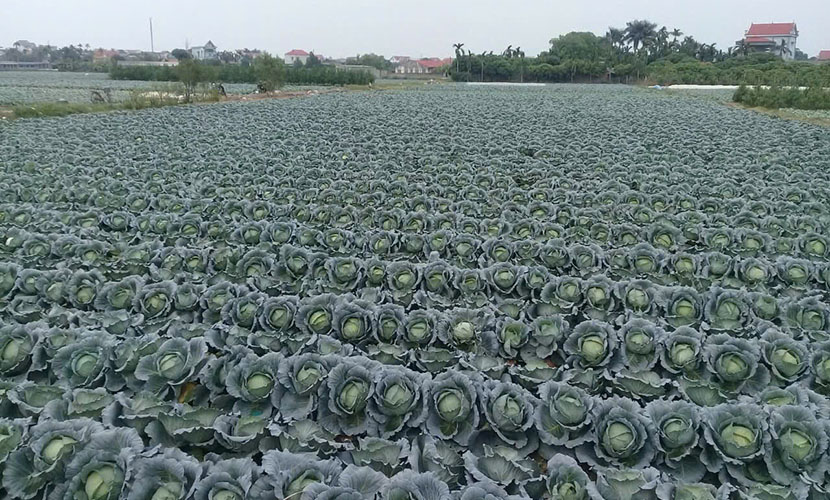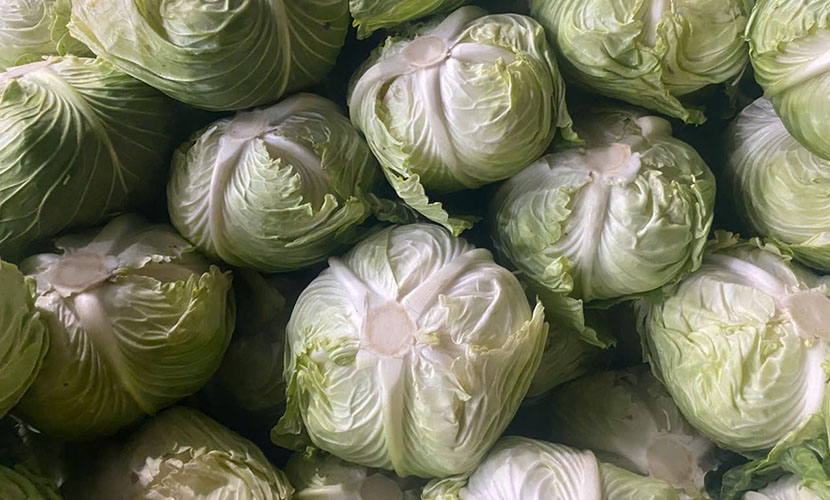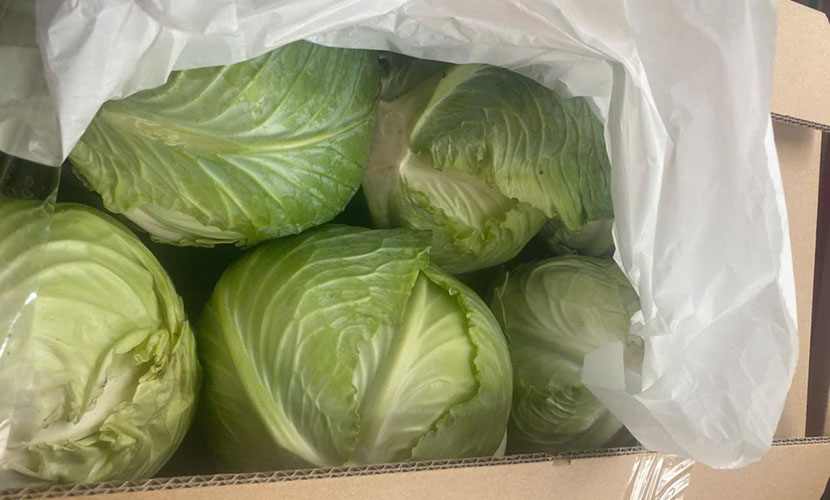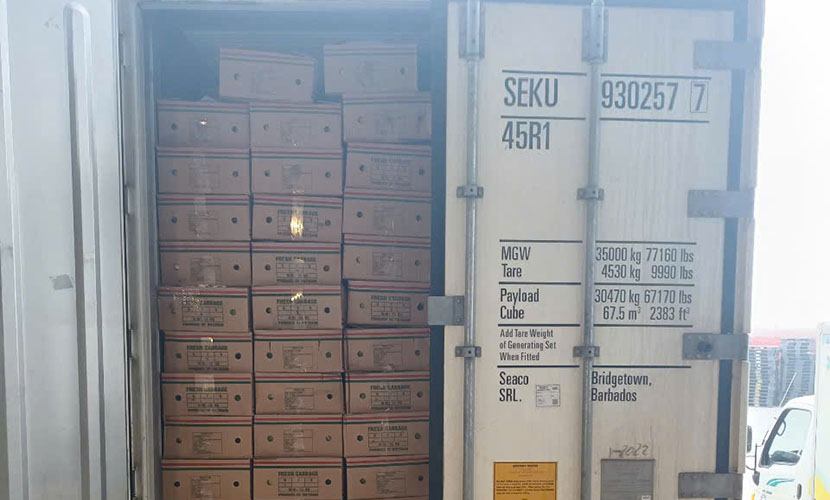
Recently, Dak Nong province has developed specialized vegetable farming areas, with key crops such as cabbage and cauliflower. However, the quality of produce has not met standards, and prices remain unstable, leading to low efficiency. Most farmers have been producing based on market fluctuations without long-term planning.
In 2024, the province implemented a model of Vietgap cabbage production linked with product consumption. The model covered six hectares, involving twelve participating households.

Vietgap cabbage farm
Under this model, participating households received a 70% subsidy from the government for seeds, fertilizers, and various pesticides. Agricultural extension officers provided guidance on Vietgap-compliant production techniques.
Also, they monitored plant growth in each stage, and supported effective pest and disease control methods. Additionally, they supported households with Vietgap consulting and certification services, trained in soil, water, and product sampling for certification purposes.
After three months of cultivation, the model yielded an average productivity of 40 tons per hectare. The purchasing price under a contract was at 5,000 VND/kg for grade-A cabbages. After deducting costs, farmers earned a profit of 130 million VND per hectare per season.

Vietgap cabbage for export
This model achieved a 16.7% increase in productivity and over 60% higher economic efficiency compared to traditional farming methods. Notably, in the same season, farmers outside the model received only 2,000 – 4,000 VND/kg. Sometimes, they could not even sell their cabbage.
The success of Vietgap cabbage model not only brought high economic returns but also had positive social and environmental impacts. Specifically, applying Vietgap standards helped farmers produce safe, high-quality products that meet consumer demands.

Vietgap cabbage box for export
Besides benefiting the farmers, Vietgap cabbage production also contributes to environmental protection. It improves farm management and reduces the use of chemical fertilizers and harmful pesticides. As a result, it helps maintain ecological balance. The model shifts the focus on increasing yield to emphasizing product quality. Moreover, the model encourages responsible and environmentally sustainable farming model.
More than just achieving Vietgap certification, the model has helped farmers connect with businesses for product off-take through contract farming, giving them peace of mind in production. As a result, economic efficiency is ensured, local incomes are stabilized, and the vegetable production area continues to grow sustainably.

Loading fresh cabbage for export
This year, many cabbage-growing households in the commune suffered total losses as traders refused to buy due to extremely low prices. They had no choice but to abandon their crops after months of hard work. However, the households participating in the Vietgap cabbage model achieved high efficiency in economic, social, and environmental aspects.
This Vietgap cabbage clearly demonstrates the benefits of product consumption linkages. The model has been highly appreciated by local people and authorities. Also, vegetable export business has continued to accompany farmers to sustain and expand this model further.
Vietnamese source: https://khuyennong.quangngai.gov.vn/i2905-dak-nong–san-xuat-rau-cai-bap-vietgap-lien-ket-tieu-thu-san-pham–mo-hinh-nho-xu-huong—.aspx
